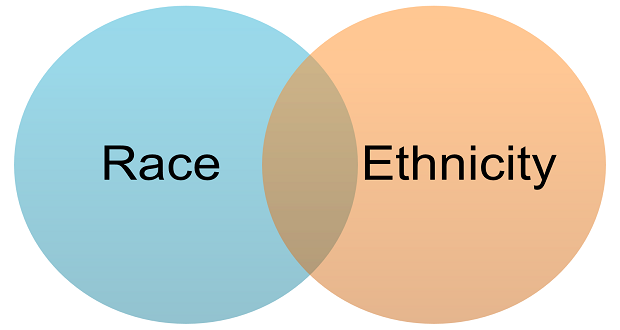Week 5 600 – Design and Statistical Analysis
(Week 5 600 – Design and Statistical Analysis) Submit 2-3 pages describing the Methods/Design and Statistical Analysis that you will use in your project. Use the evidence from the peer reviewed articles that you have critically appraised and synthesized. Follow APA format and cite references. Include the following:

- Describe the evaluative criteria (indicators or variables) to be addressed in answering each evaluation question.
Methods/Design
This project will employ a mixed-methods approach to explore the research questions comprehensively. According to Creswell and Clark (2017), mixed-methods designs provide robust insights by integrating quantitative and qualitative data. Initially, a cross-sectional survey will collect quantitative data to identify trends and patterns. The survey will include structured questions designed to measure key variables, such as participant demographics, behavioral patterns, and perceptions. Participants will be selected using stratified random sampling to ensure representative diversity across relevant demographics (Smith, 2018).
Qualitative data will be gathered through in-depth, semi-structured interviews. These interviews will allow for a deeper understanding of participants’ experiences and perspectives (Patton, 2015). Interview participants will be purposively selected to capture a wide range of views. The interviews will be audio-recorded, transcribed verbatim, and anonymized to maintain confidentiality and ensure accuracy. (Week 5 600 – Design and Statistical Analysis)
Evaluative Criteria
To answer the evaluation questions, several indicators or variables will be addressed. For quantitative analysis, key indicators include participant demographics (age, gender, education level), behavioral patterns (frequency of specific behaviors, duration), and perceptions (satisfaction levels, attitudes). These indicators will provide measurable data to test hypotheses and explore relationships.
For qualitative analysis, evaluative criteria will include themes related to participant experiences, challenges faced, and perceived outcomes. These themes will be identified through coding and thematic analysis of interview transcripts.
Statistical Analysis
Descriptive and inferential statistics will be utilized for quantitative data analysis. Descriptive statistics, such as means, medians, and standard deviations, will summarize the data and provide a clear picture of overall trends (Field, 2018). Inferential statistics will test hypotheses and examine relationships between variables. Correlation analysis will explore associations, while regression analysis will identify predictors of key outcomes (Tabachnick & Fidell, 2019).
To compare groups, t-tests and ANOVA will be used. These tests will determine if there are significant differences between groups on key variables (Pallant, 2020). Chi-square tests will analyze categorical data, exploring associations between variables (Agresti, 2018).
For qualitative data, thematic analysis will be conducted. This method will identify and interpret patterns within the data, providing insights into participant experiences (Braun & Clarke, 2006). NVivo software will assist with qualitative data management, coding, and analysis, ensuring a systematic and rigorous approach (QSR International, 2018).
Combining quantitative and qualitative methods will enhance the validity and reliability of the findings. This mixed-methods design allows for a nuanced interpretation of the data, addressing both numerical trends and personal experiences. Therefore, this approach will ensure robust and meaningful results, providing comprehensive insights into the research questions. (Week 5 600 – Design and Statistical Analysis)
- Describe the research approaches to be used to answer each question and why they are appropriate to the evaluation questions posed.
- Describe in specific detail how data will be collected related to each of your evaluative criteria/indicators. Discuss exactly how the data be collected, when, and by whom.
- Describe any data collection tools in terms of their development and appropriateness in answering the evaluation questions. Provide information on validity and reliability of tools, if available.
- Explain why the data collection methods are appropriate to the research approach, type of data, and purpose of the evaluation.
- Describe how you will analyze the data, including specific statistical tests to be used. Include dummy data tables if applicable to show how you will display your findings. Expectations Due: Monday, 11:59 pm PT Length: 2-3 pages Format: APA 7th ed. (Week 5 600 – Design and Statistical Analysis)
Research: At least one peer reviewed reference within the last 5 years. This will be based off the other assignments concerning nurse retention. (Week 5 600 – Design and Statistical Analysis)
References
Agresti, A. (2018). Statistical methods for the social sciences (5th ed.). Pearson.
Braun, V., & Clarke, V. (2006). Using thematic analysis in psychology. Qualitative Research in Psychology, 3(2), 77-101. https://doi.org/10.1191/1478088706qp063oa
Creswell, J. W., & Clark, V. L. P. (2017). Designing and conducting mixed methods research (3rd ed.). SAGE Publications.
Field, A. (2018). Discovering statistics using IBM SPSS Statistics (5th ed.). SAGE Publications.
Pallant, J. (2020). SPSS survival manual (7th ed.). McGraw-Hill Education.
Patton, M. Q. (2015). Qualitative research & evaluation methods: Integrating theory and practice (4th ed.). SAGE Publications.
QSR International. (2018). NVivo qualitative data analysis software (Version 12) [Software].
Smith, J. A. (2018). Qualitative psychology: A practical guide to research methods (3rd ed.). SAGE Publications.
Tabachnick, B. G., & Fidell, L. S. (2019). Using multivariate statistics (7th ed.). Pearson.
Do you need a similar assignment done for you from scratch? Order now!
Use Discount Code "Newclient" for a 15% Discount!

![]()





